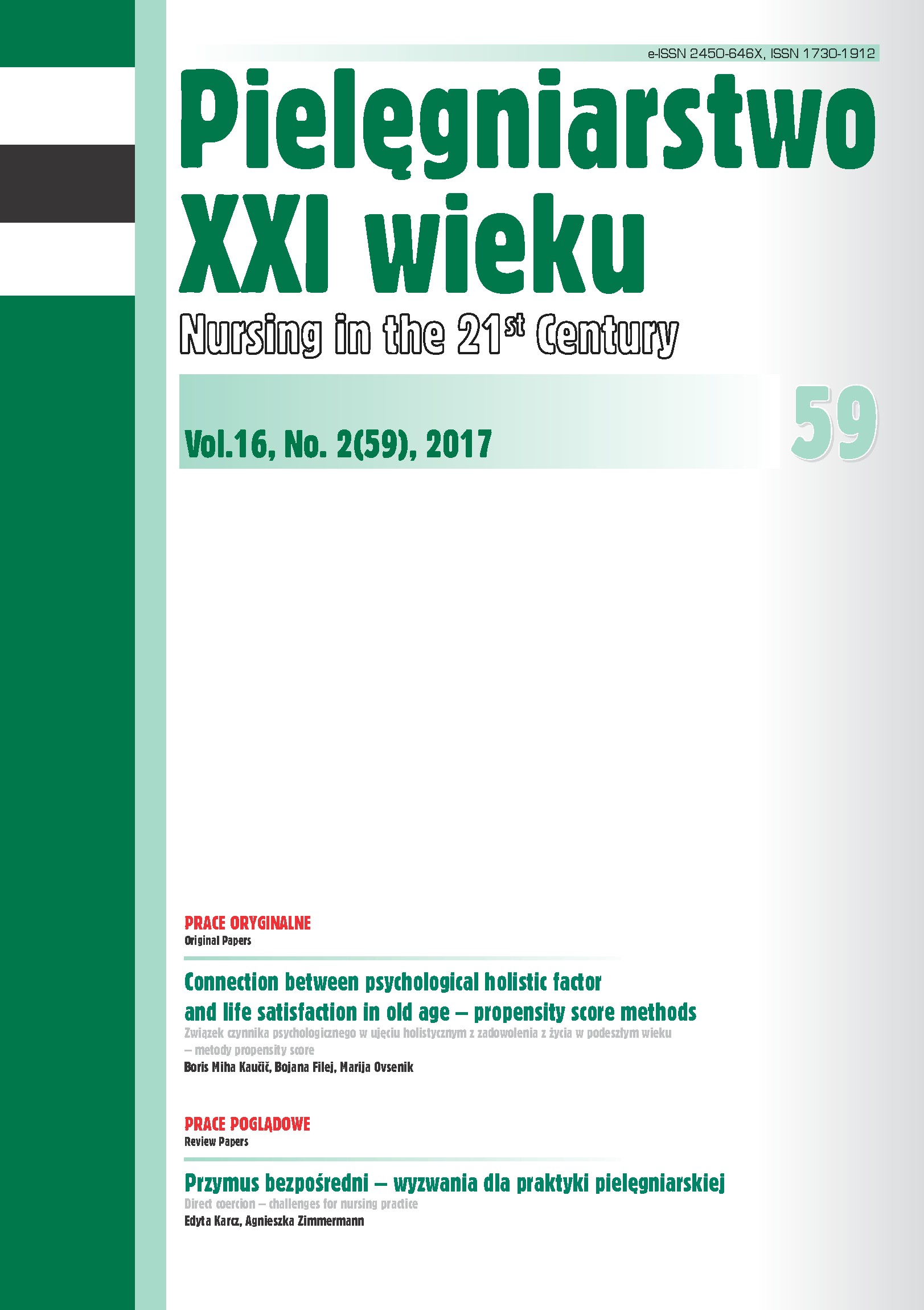Nosocomial septicemia diseases in infants with body mass below 2500g, treated in Intensive Care Unit - comparative analysis
DOI:
https://doi.org/10.1515/pielxxiw-2017-0018Keywords:
septicemia, sepsis, prematurityAbstract
NOSOCOMIAL SEPTICEMIA DISEASES IN INFANTS WITH BODY MASS BELOW 2500G, TREATED IN INTENSIVE CARE UNIT - COMPARATIVE ANALYSIS
Introduction. The first minutes and hours after birth decide about the quality of human health and further development. Neonatology is intended to optimally lead children through this period, especially the weakest ones.
Aim. The aim of this project is an estimation of sepsis (septicemia) in infants treated in Intensive Care Unit (ICU) in 2 periods, and an attempt to answer what was the cause of infections, as well as comparison of infection causes in infants in the interval of 10 years.
Material and methods. All infants taken to the Intensive Care Unit of the Paediatric Centre at the Central Teaching Hospital of the Medical University of Łodz, in the periods from March 2002 to February 2003 and from January 2013 to December 2013 are included to the study (retrospective). Children taken into consideration had to meet the following criteria: body mass below 2500 grams; first 48 hours of life; infants who stayed in ICU at least 3 days.
References
1. Gajewska E. Neonatologia wczoraj, dziś i jutro. Forum – Intensywna Terapia Noworodka. 2000; 1:3-5.
2. Pilewska-Kozak AB. Opieka nad wcześniakiem. Warszawa: Wydawnictwo Lekarskie PZWL; 2009.
3. Twarowska I, Szczapa J. Postępy w Neonatologii. Poznań; 1992.
4. Garner J, Jarvis W, Ermol T. CDC definitions for nosocomial infections. Am J Infect Control. 1988; 16, 128.
5. Lopez Sastre JB, Coto Cotallo D, Fernandez Colomer B, et al. Neonatal sepsis of nosocomial origin: an epidemiological study from the “Grupo de Hospitales Castrillo”. J. Perinat Med. 2002; 30: 149-157.
6. Pawlik D, Lisowska-Miszczyk I, Radziszewska R i wsp. Zakażenie Bacillus cereus u noworodka z niewiarygodnie małą urodzeniową masą ciała. Medycyna Wieku Rozwojowego. 2009; 13(1); 40-44.
7. Golombek SG, Rohan AJ, Parvez B, et al. “Proactive” management of percutaneously inserted central catheters results in decreased incidence of infection in the ELBW population. J. Perinatol. 2002; 22: 209-213.
8. Adams-Chapman I, Stoll BJ. Prevention of nosocomial infections in the neonatal intensive care unit. Curr Opin Pediatr. 2002;14: 157-164.
9. Boukadida J, Salem N, Hannachi N, et al. Genotypic exploration of a hospital neonatal outbreak due to Klebsiella pneumoniae producing extended-spectrumbetalactamase. Arch. Pediatr. 2002; 9: 463-468.
10. Avila-Figueroa C, Cashat-Cruz M, Aranda-Patron E, et al. Prevalence of nosocomial infections in children: survey of 21 hospitals in Mexico. Salud Publica Mex. 1999; 41 Suppl 1: 18-25.
11. Wilińska M, Jałbrzykowska M. Ciężkie zakażenie szpitalne Pseudomonas aeruginosa u noworodka – opis przypadku. Postępy neonatologii. 2009;1.
Published
Issue
Section
License
Copyright (c) 2017 Authors

This work is licensed under a Creative Commons Attribution-NonCommercial-NoDerivatives 3.0 Unported License.




